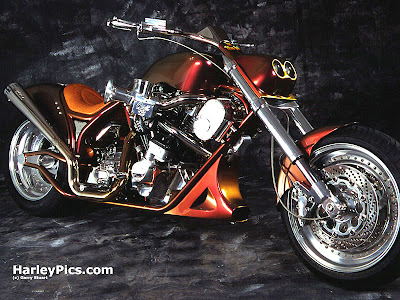Today, Harley-Davidson has become iconic of American ingenuity and ruggedness. The three Davidson brothers and William S. Harley began building motorcycles from a family shed, and then launched the Harley-Davidson company in 1903. Within time, the company grew from its humble beginnings, to become a major means of recreational transportation.
Furthermore, Harley-Davidson was instrumental in both World War I and World War II, in securing victories for the U.S. and the Allies. Harley-Davidson continued to produce innovations that would reinvent the way that companies manufactured motorcycles. The company further advanced its dominance of America's motorcycles in the 1950s. In 1953, the Indian motorcycle company folded, making Harley-Davidson the exclusive producer of motorcycles within the U.S.
However, the company never ceased its quest for excellence. Harley-Davidson introduced innovations, including the 1957 unveiling of its "Sportster" model. A new culture of motorcyclists sporting Harley Davidson boots and leather jackets was born. In addition, Harley-Davidson motorcycles became a symbol of freedom, and a means of exploring America's open roads.The year 1965 became a significant year for Harley-Davidson, as the company became public. At that time, the Davidsons and Harleys decided to sell their shares of the company, on the stock market. They sold the company to the American Machine and Foundry Co. (AMF), owned by a Harley-Davidson fan. This transaction provided the company with the financial stability needed to compete against the emerging competition of Japanese motorcycle producers. The Japanese had become a viable motorcycle market competitor.In the 1970s, Harley-Davidson continued to expand and improve. In particular, the company modernized its production methods. While these changes ultimately improved the quality of the motorcycles, they also created some logistical problems. Secondly, the competition from Japanese motorcycle manufacturers compounded the problem. Many new motorcyclists began choosing Japanese motorcycles, for their affordability and reliability.To create a trifecta of problems, the U.S. experienced a recession during the early 1980s. In 1981, the mangers of Harley-Davidson virtually saved the company, by engaging in a "management buyout." They also began using management and production methods that their Japanese competitors had implemented. For instance, they granting employees more input in the manufacturing process, and produced materials as they required them. These changes resulted in higher morale among workers, and more communication between workers and management.In terms of the motorcycles themselves, Harley-Davidson began making changes to their appearances. They realized that details in their motorcycles' look could attract or repulse shoppers. Harley-Davidson wanted to give their motorcycle models a face-lift, in order to appeal to a wider scope of potential customers. All of these changes allowed Harley-Davidson to secure roughly a third of the "super heavyweight" U.S. motorcycle market.Throughout its history, Harley-Davidson has changed with the times.
Recently, the company has sponsored several huge online events, requesting Harley-Davidson fans to create audio and video journals of their excursions. From the early days of motorcycles, to the literal freewheeling of the 1960s, and beyond the new millennium, Harley-Davidson has remained a leader in the world of heavyweight motorcycles and accessories.

0 comments:
Post a Comment